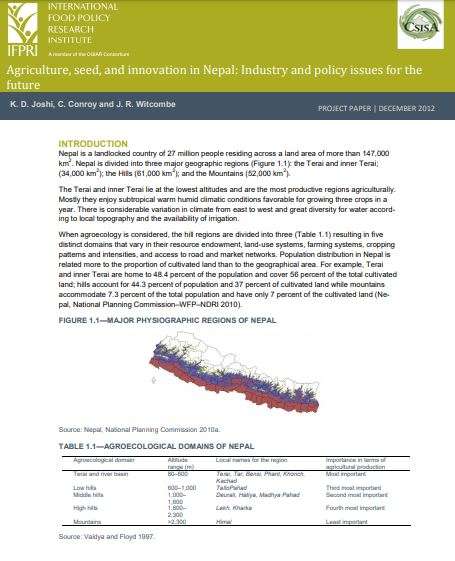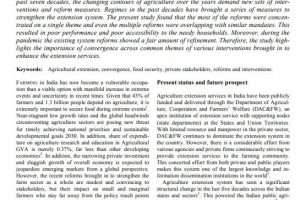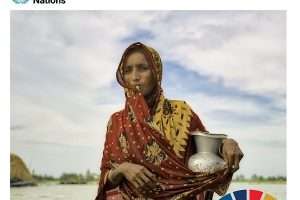When agroecology is considered, the hill regions are divided into three (Table 1.1) resulting in five distinct domains that vary in their resource endowment, land-use systems, farming systems, cropping patterns and intensities, and access to road and market networks. Population distribution in Nepal is related more to the proportion of cultivated land than to the geographical area. For example, Terai and inner Terai are home to 48.4 percent of the population and cover 56 percent of the total cultivated land; hills account for 44.3 percent of population and 37 percent of cultivated land while mountains accommodate 7.3 percent of the total population and have only 7 percent of the cultivated land (Ne-pal, National Planning Commission–WFP–NDRI 2010)
Agriculture, seed, and innovation in Nepal: Industry and policy issues for the future





Add Comment